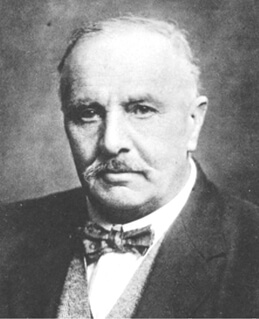Registered with the Registrar of Newspapers for India under R.N.I 53640/91
Vol. XXX No. 6, July 1-15, 2020
A Forgotten Biologist of Madras: Alfred Gibbs Bourne
by Dr. A. Raman
 Alfred Gibbs Bourne. Source: J.S. Gardiner, Obituary Notices of Fellows of the Royal Society, 1941.
Alfred Gibbs Bourne. Source: J.S. Gardiner, Obituary Notices of Fellows of the Royal Society, 1941.History of biology in the Presidency College of Madras (PCM), is usually spoken about from the times of Philip Furley Fyson, a botanist of repute. Little recognition occurs about the times before Fyson here.
Before Fyson arrived in Madras to teach Botany at the Presidency College in 1904, there were no separate botany and zoology departments. It was a biology department. Alfred G. Bourne was Head of the biology department from 1886. As a biology student in London, Bourne was inspired by the lectures of Thomas Henry Huxley (nicknamed Darwin’s bulldog) and Ray Lankester. As a student, Bourne worked closely with Lankester and published his findings in professional journals. Before arriving in Madras, Bourne regularly visited Naples to train with Anton Dohrn (1849–1909), who was an ardent Darwinian as well, similar to Thomas Huxley.
In 1880, Bourne published the full description of the nephridia of the medically important leech (Hirudomedicinalis) along with Ray Lankester. He studied the biologies of the horseshoe crab (Limulus) and chambered nautilus (Nautilus), for example. He specialised on aquatic animals: from microscopic to macroscopic.
One clear agenda when he joined PCM was to develop biology as a definite subject in the curriculum. He taught here both aspects of zoology and botany. An artificial lake within the college precinct was his initial experimental site. Later he explored other lakes and ponds in the neighbourhood. He experimented with giant flagellar amoeboids (e.g., Pelomyxa) and a locally available small cichlid fish (Chaetobranchus); the latter in relation to its oxygen supply. He published a research monograph of a common earthworm (Monilogaster). His wife Emily made the colour illustrations of his earthworm study. Emily in later years was associated with Philip and Diana Fyson and helped them by illustrating some of the species that have found a place in Fyson’s The Flora of the Nilgiri and Pulney Hilltops (1916).
Bourne was the Registrar of the University of Madras from 1891–1899. Between 1897 and 1898 he was the officiating Government Botanist to the Government of Madras with a hope that a Botanical Survey of Madras would be established. Although this did not materialise, the plant collections made by Alfred and Emily were of great use to James Sykes Gamble, who published the first edition of three volumes of the Flora of the Presidency of Madras in 1915. Between 1903 and 1914, Bourne served Government of Madras as the Director of Public Instruction and the Commissioner for Government Examinations. In 1915, Bourne was invited to direct the Indian Institute of Science, succeeding Morris Travers, where Bourne served until 1925.
Bourne, who displayed an extraordinary versatility in both botany and zoology, died in Dartmouth (England) in 1940.

